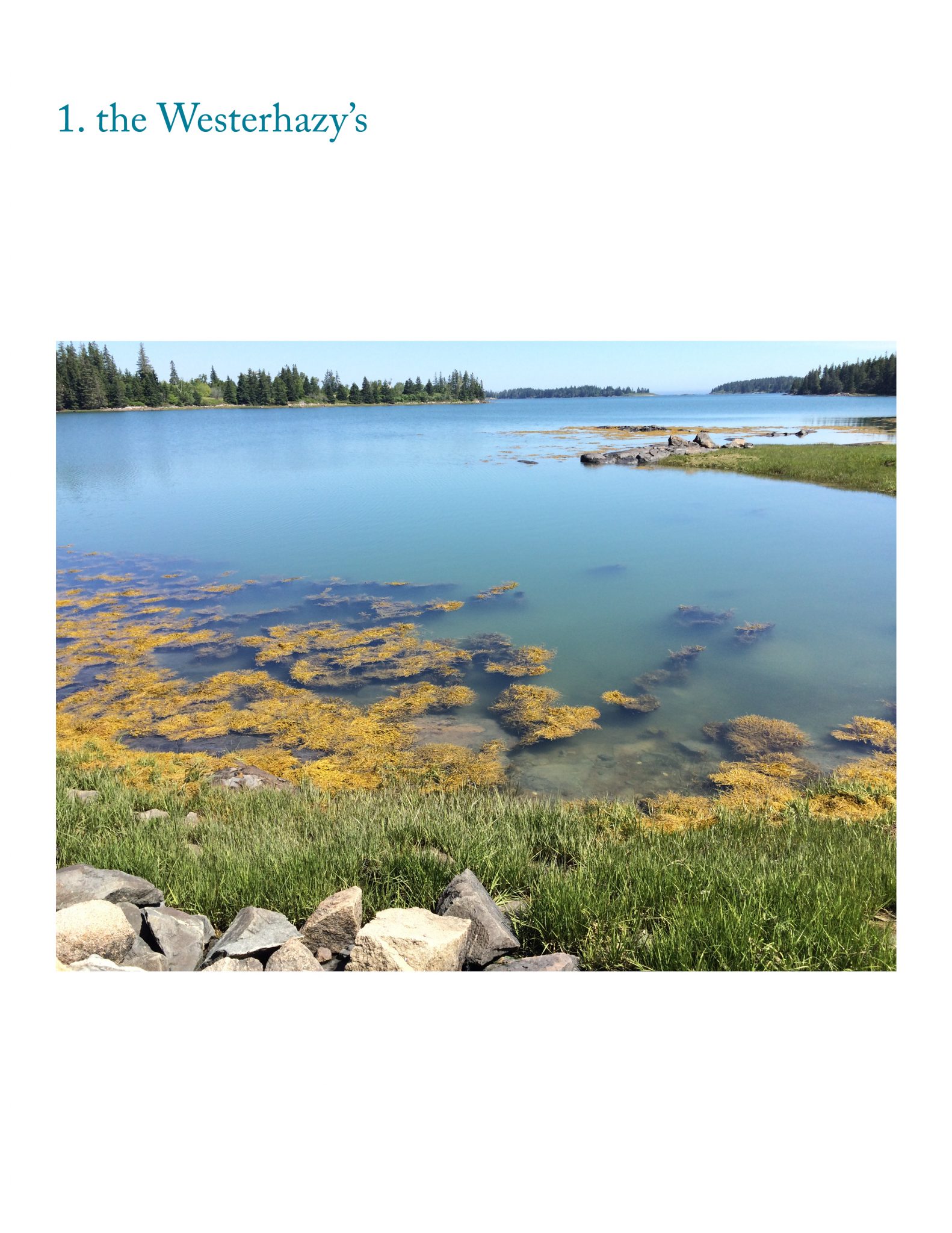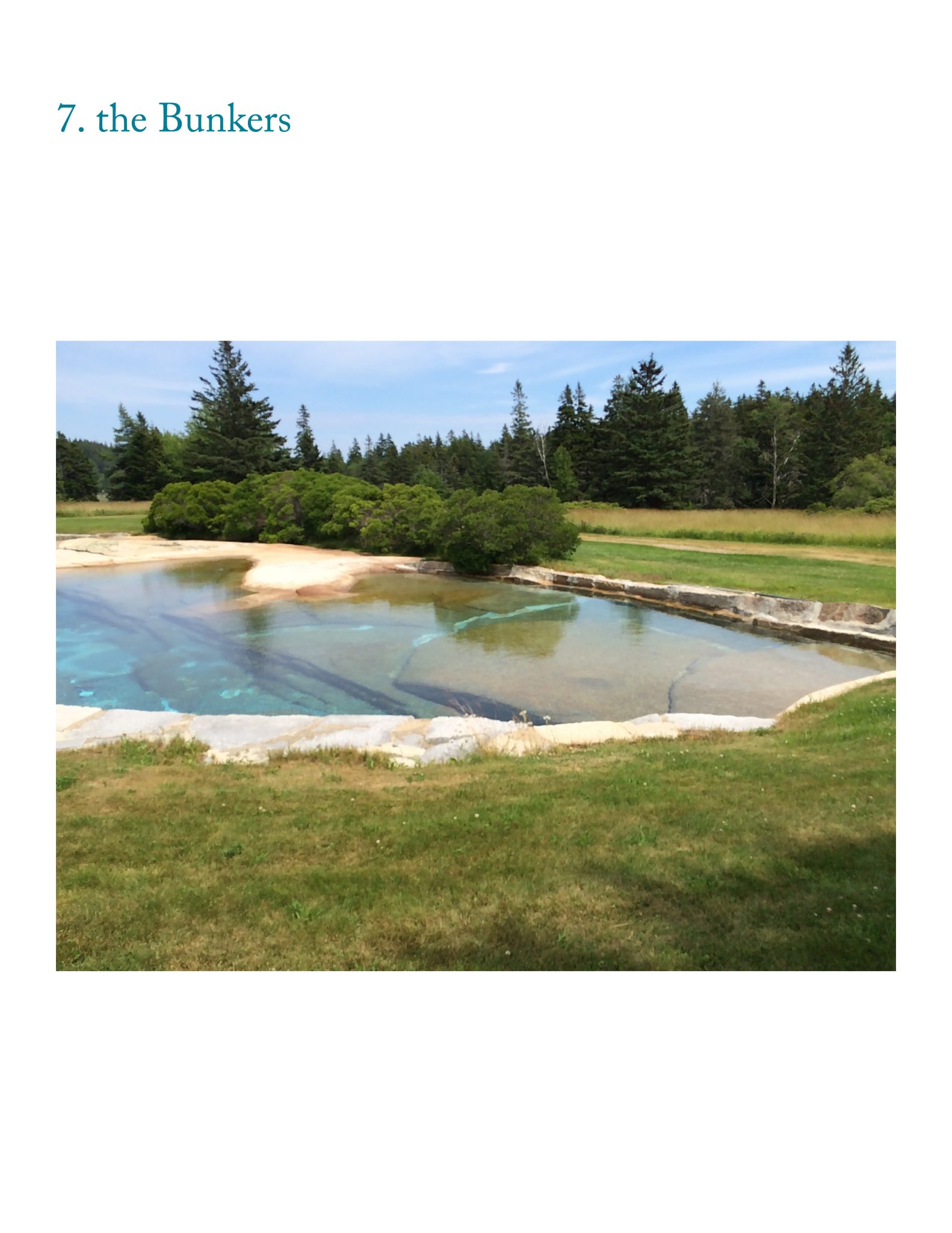The Swimmer & the swimmer
—
“I’m swimming across the county,” Ned said.
“Why, I didn’t know one could,” exclaimed Mrs. Halloran.
“Well, I’ve made it from the Westerhazys’,” Ned said. “That must be about four miles.”
—
The Swimmer by John Cheever was originally published in The New Yorker in 1964. My journey took me to 11 out of 16 swim spots in July 2016. —
1. the Westerhazy’s Pool (Smith Cove)
2. the Grahams (Arey Cove)
3. the Hammers (Robert’s Harbor)
4. the Lears
5. the Howlands
6. the Crosscups
7. the Bunkers
8. the Levys
9. the Welchers (pool was dry in original text)
10. the public pool in Lancaster
11. the Hallorans
—
12. the Sachses
13. the Biswangers
14. Shirley Adams
15. the Gilmartins
16. the Clydes

& the swimmer
The island of Vinalhaven gives visitors an unspoiled impression compared to other small towns on the Eastern seaboard—evidence of mainstream culture is scarce. There are only a few shops, wifi tends to be on the slower side, and many of the residents have a direct relationship with the natural world through the lobstering industry. The island is peaceful and the natural beauty in combination with the small-seaside-village architecture is charming. The geographic isolation of the island seems to result in residents leaning on each other more than they might in larger or more connected communities. I met and chatted with a teenage boy on the island who had moved from Florida to the island. When I asked him where he preferred to live, without hesitation, he responded, “here” stating “on the island, everyone looks out for each other.” I found this sentiment captivating, and in contrast to other (American) neighborhoods I’ve inhabited.
This type of close-knit community conjured a nostalgic mood for me. The quarries and swimming holes—staples of summer life on the island—reminded me of my favorite short story by John Cheever, The Swimmer. Connecting these points and feelings, I became Neddy Merrill, on the final day of the residency and aimed to “swim home” (or at least touch water) in fifteen different “pools” or bodies of water—named “River Lucinda” after ‘my wife.’



“As published, the story is highly praised for its blend of realism and surrealism, the thematic exploration of suburban America, especially the relationship between wealth and happiness, as well as his use of myth and symbolism.” (from Wikipedia)
This story echoes my interest in the relationship between logical and representational things and the emotional, the experiential and the intangible. The control Ned aspires to possess when forming a “river” by connecting all the pools in the county is a stark contrast to what might be his crumbling emotional life. Other people are better at this than me: an analysis of the story via the New Yorker podcast here.
contact: mary.banas (at) gmail.com
1981–NOW © YES IS MORE, Mary Banas, specified rights holders. All Rights Reserved.
1981–NOW © YES IS MORE, Mary Banas, specified rights holders. All Rights Reserved.